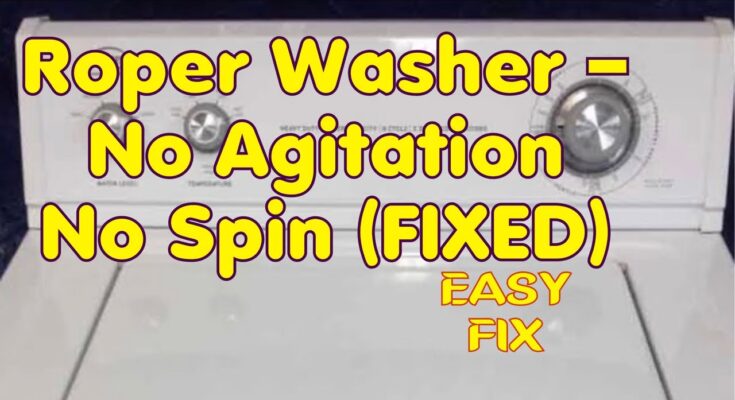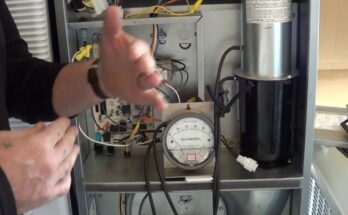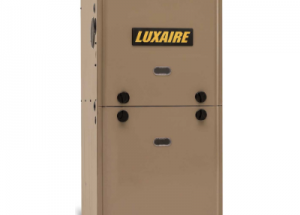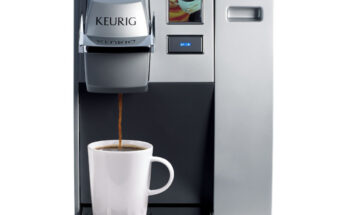If your Roper washer isn’t working, check the power supply and inspect the lid switch. These are common issues.
Roper washers are reliable but can sometimes face problems. Understanding basic troubleshooting steps can save you time and money. Ensure the washer is plugged in and the circuit breaker is not tripped. Inspect the lid switch; a faulty switch can prevent the washer from starting.
Check the water supply hoses for kinks or blockages that might hinder water flow. Make sure the load is balanced, as an unbalanced load can cause operational issues. Regular maintenance and quick troubleshooting can extend the life of your Roper washer and keep it running smoothly.

Credit: www.roperappliances.com
Common Washer Problems
Roper washers are reliable, but sometimes issues arise. This guide covers common problems. Fixing these can extend your washer’s life. Let’s dive into troubleshooting!
No Power
If your Roper washer won’t start, check these steps:
- Power Source: Ensure the washer is plugged in.
- Breaker: Check your home’s circuit breaker. Reset if tripped.
- Power Cord: Inspect for damage. Replace if necessary.
- Control Panel: Make sure it’s not locked. Refer to the manual.
Still no power? The issue might be internal. Contact a technician.
Water Leaks
Water leaks can cause damage. Identify the source quickly.
- Hoses: Check for loose or damaged hoses. Tighten or replace them.
- Door Seal: Inspect the door seal for cracks. Replace if damaged.
- Detergent Drawer: Ensure the drawer is closed properly.
- Drain Pump: Look for clogs in the drain pump. Clean as needed.
Use the table below to troubleshoot specific leak areas:
| Leak Area | Potential Cause | Solution |
|---|---|---|
| Front | Door Seal | Replace Seal |
| Back | Inlet Hoses | Tighten or Replace Hoses |
| Bottom | Drain Pump | Clean or Replace Pump |
Regular maintenance can prevent leaks. Check hoses and seals monthly.
Diagnosing No Power Issues
Is your Roper washer not turning on? This can be frustrating, but don’t worry. Diagnosing no power issues is simpler than you think. Follow the steps below to get your washer up and running.
Checking The Outlet
The first step is to check the power outlet. Ensure the washer is plugged in securely. Sometimes, a loose plug can cause no power issues.
- Plug another device into the same outlet. This will help you verify if the outlet works.
- Check the circuit breaker. Sometimes, the breaker may have tripped.
- If the outlet and breaker are fine, move to the next step.
Inspecting The Power Cord
Now, let’s inspect the power cord. A damaged cord can prevent your washer from powering up.
- Unplug the washer from the outlet.
- Look for any visible damage on the cord. Cuts or frays are signs of damage.
- If the cord looks damaged, it may need replacing.
- Use a multimeter to check for continuity. This will confirm if the cord is functional.
If the power cord is intact, you might need to check internal components. This requires a bit more technical know-how.
| Step | Action |
|---|---|
| 1 | Check outlet functionality |
| 2 | Inspect power cord for damage |
| 3 | Use a multimeter to check continuity |
Following these steps can help you diagnose no power issues. If these steps don’t solve the problem, you may need professional help.
Addressing Water Leaks
Experiencing water leaks with your Roper washer can be frustrating. Leaks can cause damage to your laundry area. Identifying the source is crucial for a quick fix. The following sections will guide you through some common troubleshooting steps.
Examining Hoses
Begin by checking the hoses connected to your washer. Ensure they are tightly secured. Loose hoses can lead to leaks.
- Inspect the water inlet hoses for any cracks or wear.
- Ensure the drain hose is properly positioned.
- Replace any damaged hoses promptly.
A simple visual inspection can save you from bigger issues. Tighten connections using pliers if needed.
Inspecting The Door Seal
The door seal, also known as the gasket, is crucial for preventing leaks. Over time, it can wear out or get damaged.
- Open the washer door and examine the rubber gasket.
- Look for any signs of damage or mold.
- Clean the gasket with a mild detergent and a soft cloth.
- If damaged, consider replacing the gasket.
A clean and intact door seal ensures a tight seal, preventing water from escaping.

Credit: www.youtube.com
Handling Drainage Problems
Drainage issues in your Roper washer can cause a lot of headaches. You might find that your laundry doesn’t get fully washed. Or, perhaps, the washer leaves water behind. In this section, we’ll guide you through common drainage problems. Follow these steps to keep your washer running smoothly.
Clearing Blockages
Blockages can cause water to stay in the drum. To clear them, start by checking the drain hose. Make sure it is not kinked or clogged. You can use a long, flexible brush to remove debris.
Next, check the drain filter. It is usually located at the bottom front of the washer. Open the filter cover and remove any lint or small objects trapped inside.
For a more thorough cleaning, you might need to disconnect the drain hose. Use a bucket to catch any water that spills out. Then, flush the hose with water to ensure it is completely clear.
Checking The Pump
The drain pump is essential for moving water out of your washer. If it fails, water will not drain properly. To check the pump, unplug your washer and locate the pump at the bottom.
You might need to remove the washer’s back panel to access it. Once you find the pump, look for any visible blockages. Use a flashlight if needed.
If the pump appears clear, test it by manually spinning the impeller. It should move freely. If it doesn’t, the pump might need replacing.
Below is a simple table to help you with common drainage issues and solutions:
| Issue | Possible Cause | Solution |
|---|---|---|
| Water not draining | Clogged drain hose | Clear the hose |
| Water left in drum | Blocked drain filter | Clean the filter |
| Washer makes noise | Blocked pump | Check and clear the pump |
Fixing Spin Cycle Issues
Is your Roper washer having issues with the spin cycle? This problem is common but fixable. Follow the steps below to troubleshoot and fix the spin cycle issues.
Balancing The Load
A common cause of spin cycle issues is an unbalanced load. Make sure the laundry is evenly distributed.
- Open the washer lid.
- Arrange clothes evenly around the agitator.
- Avoid overloading the washer.
Overloading can prevent the washer from spinning properly. Try to keep the load balanced and not too heavy. This helps the washer to spin without issues.
Inspecting The Drive Belt
The drive belt connects the motor to the drum. A worn or broken belt can stop the spin cycle.
- Unplug the washer for safety.
- Remove the back panel of the washer.
- Locate the drive belt.
- Check if the belt is loose or broken.
- If damaged, replace the belt.
Use a table to find the correct drive belt for your model:
| Roper Washer Model | Drive Belt Part Number |
|---|---|
| RAX4232KQ1 | WPW10006384 |
| RAS7133KQ1 | WPW10006384 |
| RTW4516FW2 | W10388414 |
Replacing the drive belt can restore the spin cycle. Always use the correct part number for your model.
Resolving Noise Issues
Roper washers are reliable, but they can sometimes make strange noises. These noises can be annoying and might indicate a problem. This section will help you identify and fix these noise issues easily.
Identifying Sources
First, you need to find out where the noise comes from. Different sounds can mean different problems. Here are some common noise sources:
- Banging: This might be a loose drum or an unbalanced load.
- Grinding: This could be a problem with the motor or a worn-out part.
- Clicking: This could be caused by objects stuck in the washer.
- Humming: This often points to an issue with the pump or motor.
Once you know the source, you can move on to fixing it.
Tightening Loose Parts
Loose parts can make your Roper washer noisy. Tightening these parts can solve the problem. Follow these steps:
- Unplug the washer: Safety first! Always unplug before checking.
- Check the drum: Look for loose screws or bolts around the drum.
- Tighten screws and bolts: Use a wrench or screwdriver to tighten any loose parts.
- Inspect the motor: Ensure the motor is securely fastened.
If everything is tight but the noise persists, you might need professional help. Regular maintenance can prevent many noise issues.
| Noise Type | Possible Cause | Solution |
|---|---|---|
| Banging | Loose drum or unbalanced load | Balance the load, tighten drum bolts |
| Grinding | Motor issues or worn parts | Inspect motor, replace worn parts |
| Clicking | Objects stuck in washer | Remove objects, check drum |
| Humming | Pump or motor issues | Inspect pump, check motor |
Improving Wash Quality
Achieving the best wash quality with your Roper washer is essential. Simple steps can enhance performance. This section covers key practices for better results.
Using Proper Detergent
Choosing the right detergent is crucial for your washer. Always use high-efficiency (HE) detergents. These create fewer suds and clean clothes better.
- Read the label: Ensure the detergent is HE compatible.
- Measure accurately: Too much or too little affects wash quality.
- Avoid overloading: Follow the washer’s capacity guidelines.
Using the correct amount of detergent prevents residue buildup. This also keeps your washer running smoothly.
Cleaning The Drum
Regular drum cleaning is vital for maintaining wash quality. A dirty drum can lead to poor performance and bad odors.
- Empty the washer: Remove all clothes before cleaning.
- Run a cleaning cycle: Use a washer cleaner or vinegar.
- Wipe the drum: Use a soft cloth to remove residue.
Cleaning the drum once a month is recommended. This ensures your washer stays in top condition.
| Cleaning Frequency | Cleaning Method |
|---|---|
| Monthly | Run a cleaning cycle |
| After heavy loads | Wipe the drum |
Following these steps can greatly improve wash quality. Your clothes will come out cleaner and fresher.
Maintaining Your Washer
Maintaining your Roper washer is essential for its long-term efficiency. Regular care helps avoid costly repairs and ensures your machine runs smoothly. In this section, we’ll cover key maintenance tips.
Regular Cleaning
Regular cleaning keeps your washer in top condition. Clean the drum, filters, and detergent drawer at least once a month.
- Drum: Wipe the inside of the drum with a damp cloth.
- Filters: Remove and clean the filters to avoid blockages.
- Detergent Drawer: Soak and scrub the drawer to remove residue.
Use a mild detergent and warm water for cleaning. Avoid harsh chemicals that can damage your washer.
Scheduled Inspections
Scheduled inspections help identify potential issues early. Check these parts regularly:
| Part | Inspection Frequency | What to Check |
|---|---|---|
| Hoses | Every 3 months | Look for cracks or leaks |
| Belts | Every 6 months | Check for wear and tear |
| Seals | Every 6 months | Inspect for damage or mold |
Replace any damaged parts immediately. This prevents further issues and keeps your washer running smoothly.
Follow these maintenance tips to extend the life of your Roper washer. Regular care ensures optimal performance.

Credit: www.pinterest.com
Frequently Asked Questions
Why Is My Roper Washing Machine Not Working?
Your Roper washing machine might not be working due to power issues, a faulty lid switch, or a clogged drain hose. Check for any blown fuses, ensure the lid is properly closed, and clear any blockages in the hose.
Why Does My Roper Washer Stop On The Wash Cycle?
Your Roper washer might stop mid-cycle due to a faulty lid switch, motor, or timer. Check these components first.
Why Is My Roper Washing Machine Not Filling With Water?
Your Roper washing machine may not fill with water due to a clogged filter, faulty water inlet valve, or kinked hose. Check these components first.
How Do I Reset My Laundry Washer?
To reset your laundry washer, unplug it for 1 minute. Plug it back in and select your desired cycle.
Conclusion
Fixing a Roper washer doesn’t have to be daunting. Follow the steps outlined for common issues. Regular maintenance ensures longer appliance life. Address problems early to avoid costly repairs. Keep your washer running efficiently and enjoy hassle-free laundry days. Remember, timely troubleshooting saves both time and money.



